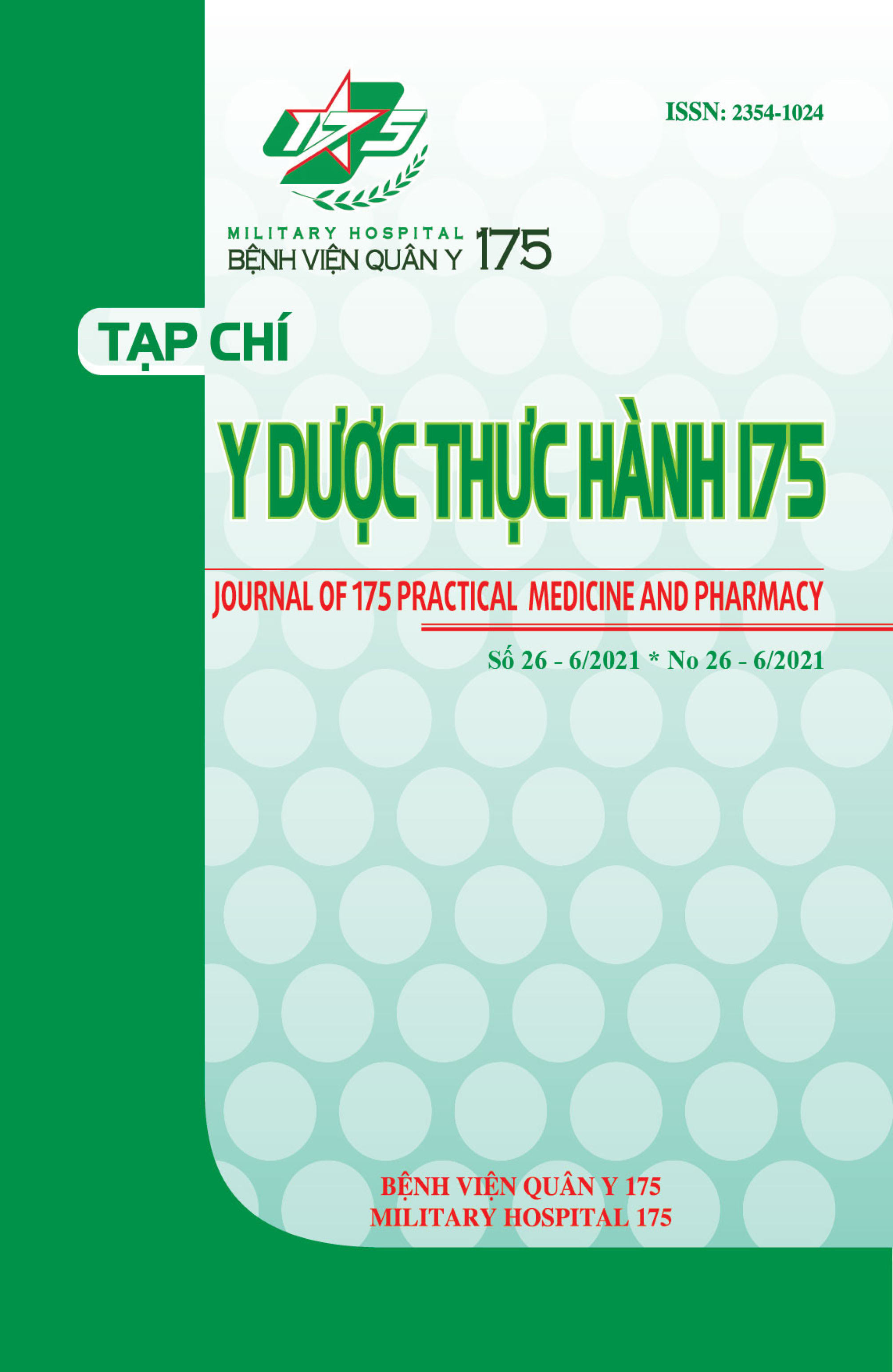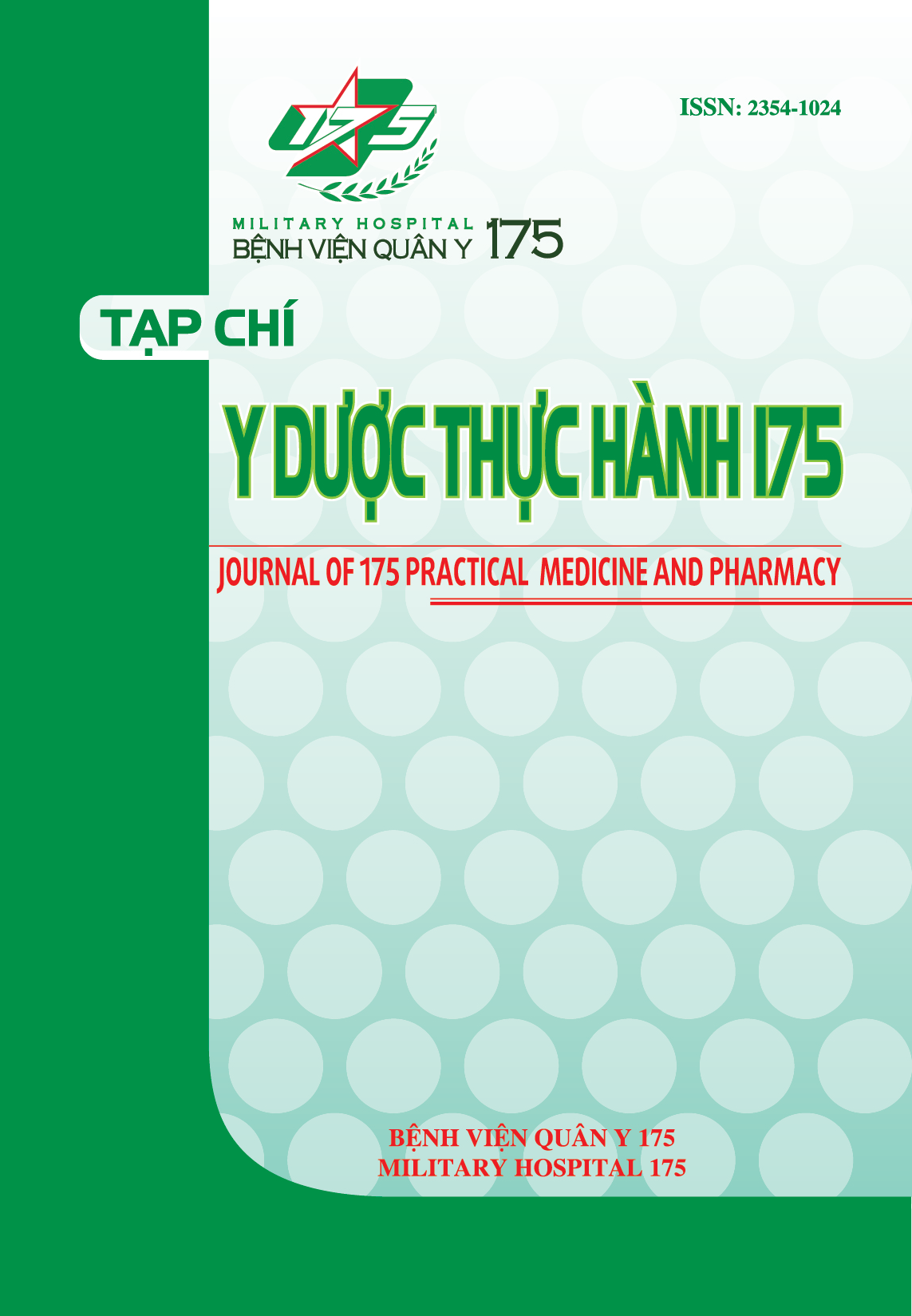NGHIÊN CỨU ĐẶC ĐIỂM LÂM SÀNG VÀ KẾT QUẢ ĐIỀU TRỊ HỘI CHỨNG CAI RƯỢU TẠI BỆNH VIỆN QUÂN Y 175
Các tác giả
Từ khóa:
Alcohol withdrawal syndromeTài liệu tham khảo
Bùi Quang Huy et al. (2010), Nghiện rượu, Nhà xuất bản Y học, Hà nội.
Nguyễn Thị Thu Lan (2014), “Đặc điểm lâm sàng và kết quả điều trị bệnh nhân hội chứng cai rượu tại Bệnh viện Quân y 120”.
Nguyễn Văn Tuấn (2014), “Nghiên cứu lâm sàng và hiệu quả điều trị suy giảm nhận thức ở bệnh nhân loạn thần do rượu”, Luận án tiến sĩ Y học, Trường Đại học Y Hà Nội.
Attilia F. et al. (2018), “Alcohol Withdrawal Syndrome: diagnostic and therapeutic methods”, Riv Psichiatr. 53 (3), pp. 118 - 122.
Borah J. A. et al. (2017), “Serum Electrolytes and Hepatic Enzymes Level in Alcohol Withdrawal Patients with and Without Delirium Tremens - A Comparative Study”, International Journal of Health Sciences and Research. 7 (11).
Mainerova B. et al. (2013), “Alcohol Withdrawal delirium - diagnosis, course and treatment”, Biomed Pap Med Fac Univ Palacky Olomouc Czech Repub. 159 (1).
Raabe J. F. et al. (2020), “Classical blood biomarkers identify patients with higher risk for relapse 6 months after alcohol withdrawal treatment”, European Archives of Psychiatry and Clinical Neuroscience.
Sachdeva A. et al. (2015), “Alcohol Withdrawal Syndrome: Benzodiazepines and Beyond”, Journal of Clinical and Diagnostic Research. 9 (9), pp. 1.
Marcin W. et al. (2001), “Age-related differences in the course of alcohol withdrawal in hospitalized patients”, Alcohol & Alcoholism. 36 (6), pp. 577-583.
Raul C. et al. (1998), “Prevalence, Trends, and Incidence of Alcohol Withdrawal Symptoms”, NIAAA’s Epidemiologic Bulletin. 22 (1), pp. 73-79.
Stanley P. C. et al. (2005), “Prevalence of alcohol withdrawal syndrome in Port Harcourt, Niger-Delta region of Nigeria, January 1999 – December 2003”, Neurology Asia. 10, pp. 53-57.
Tilman W. et al. (2001), “The severity of alcohol withdrawal is not age dependent”, Alcohol & Alcoholism. 36 (1), pp. 75-78.
Tải xuống
Tải xuống: 37










